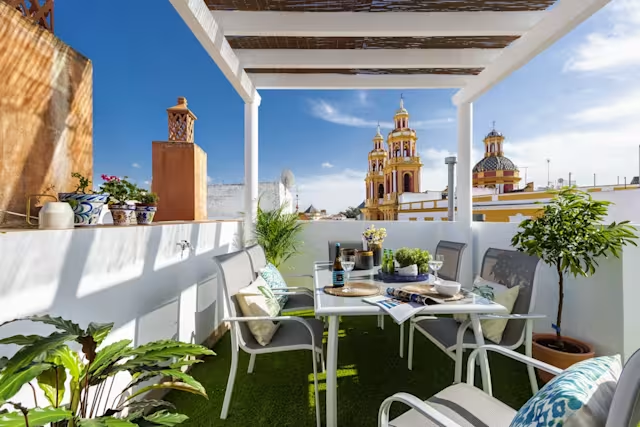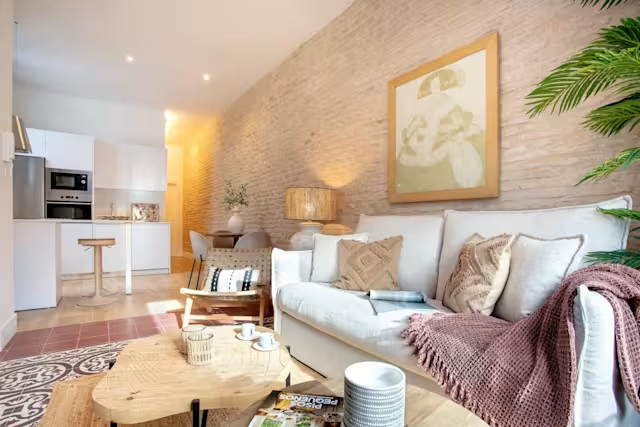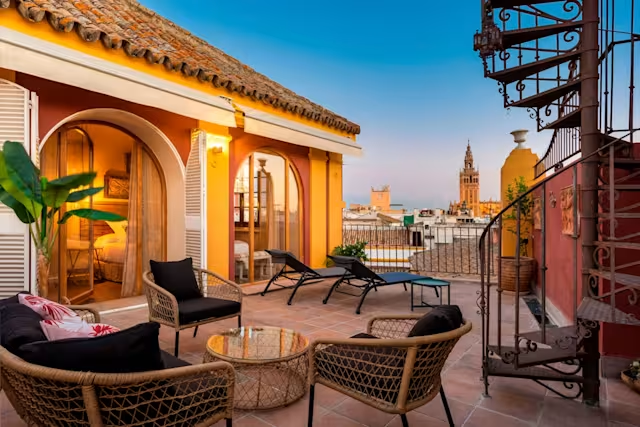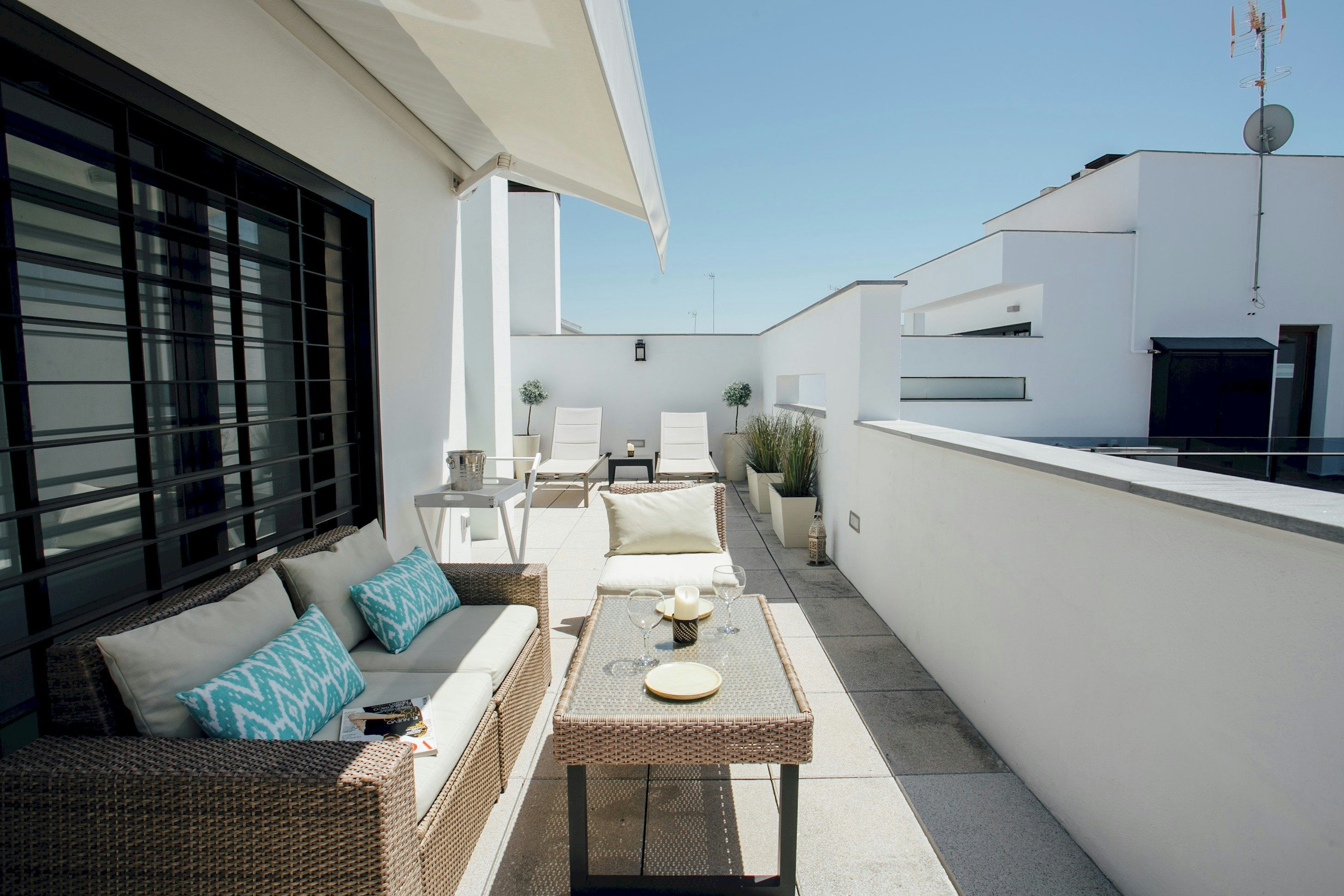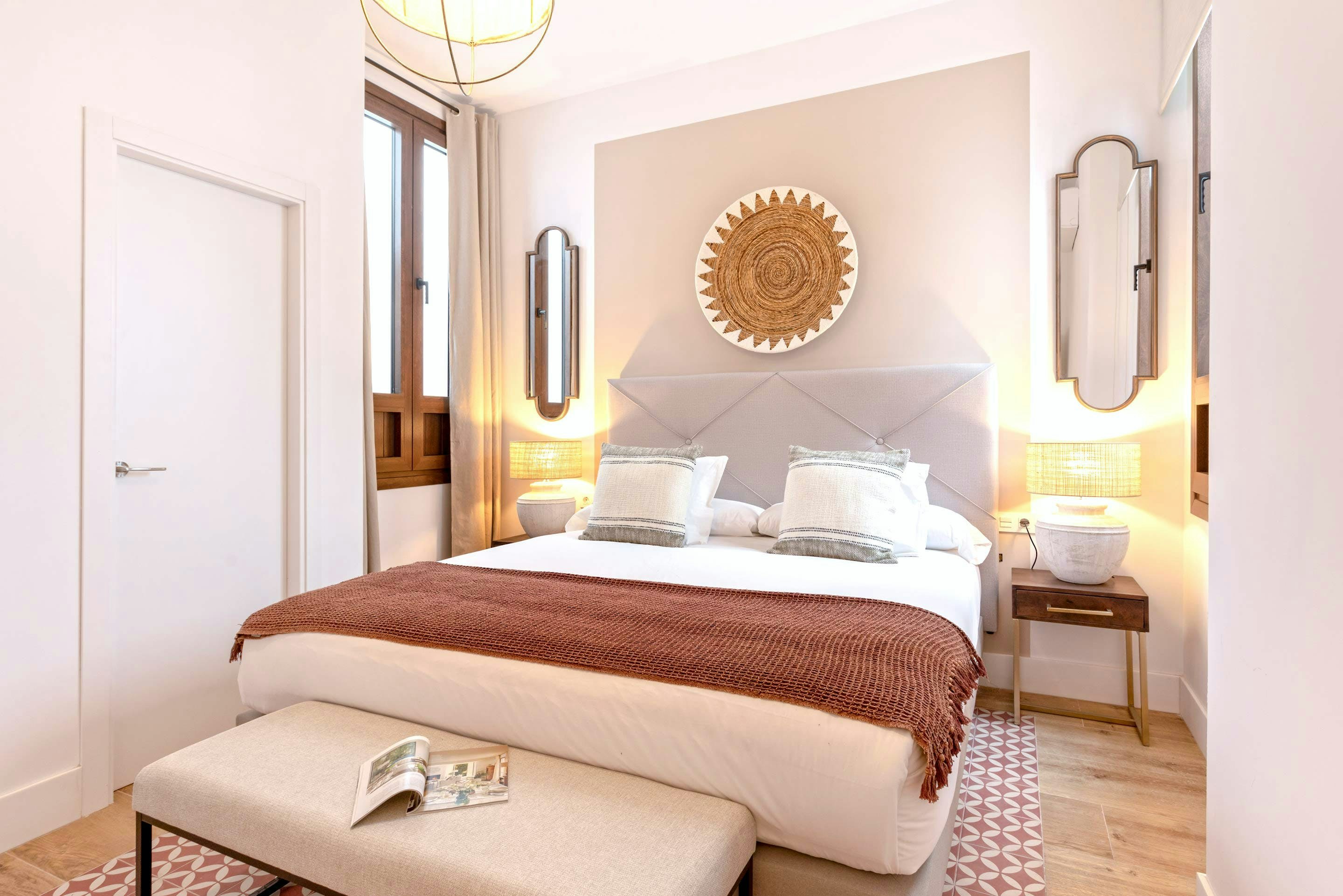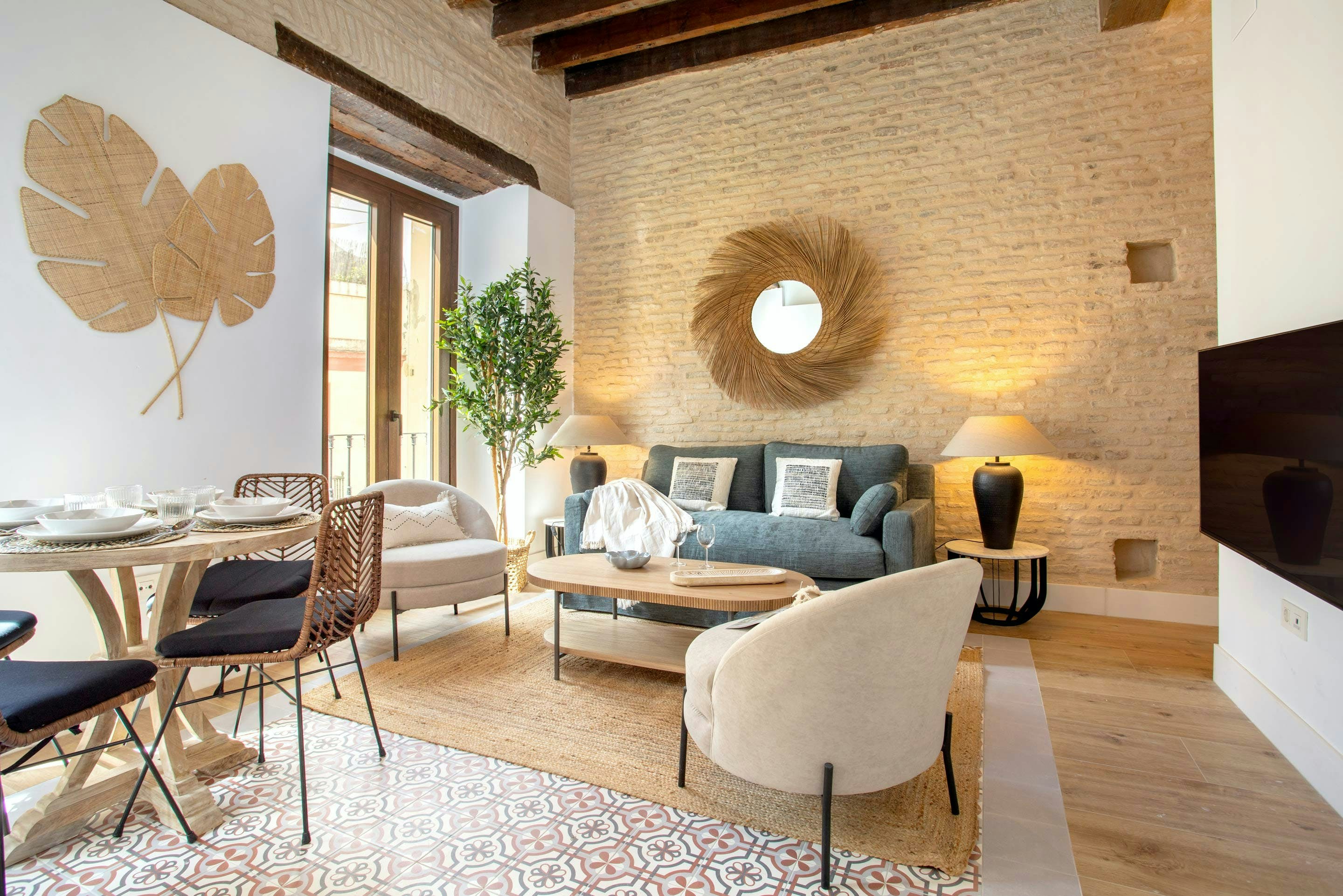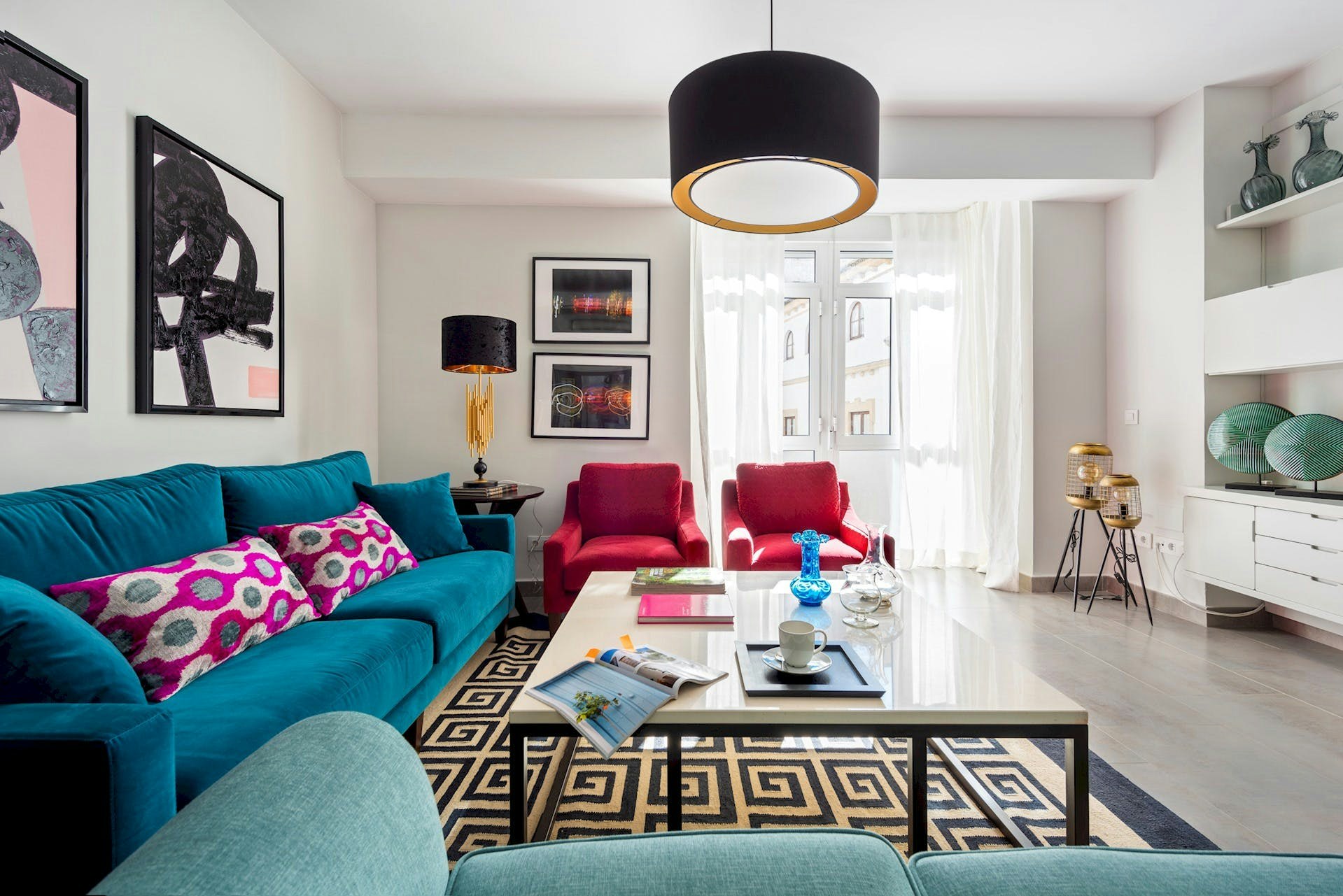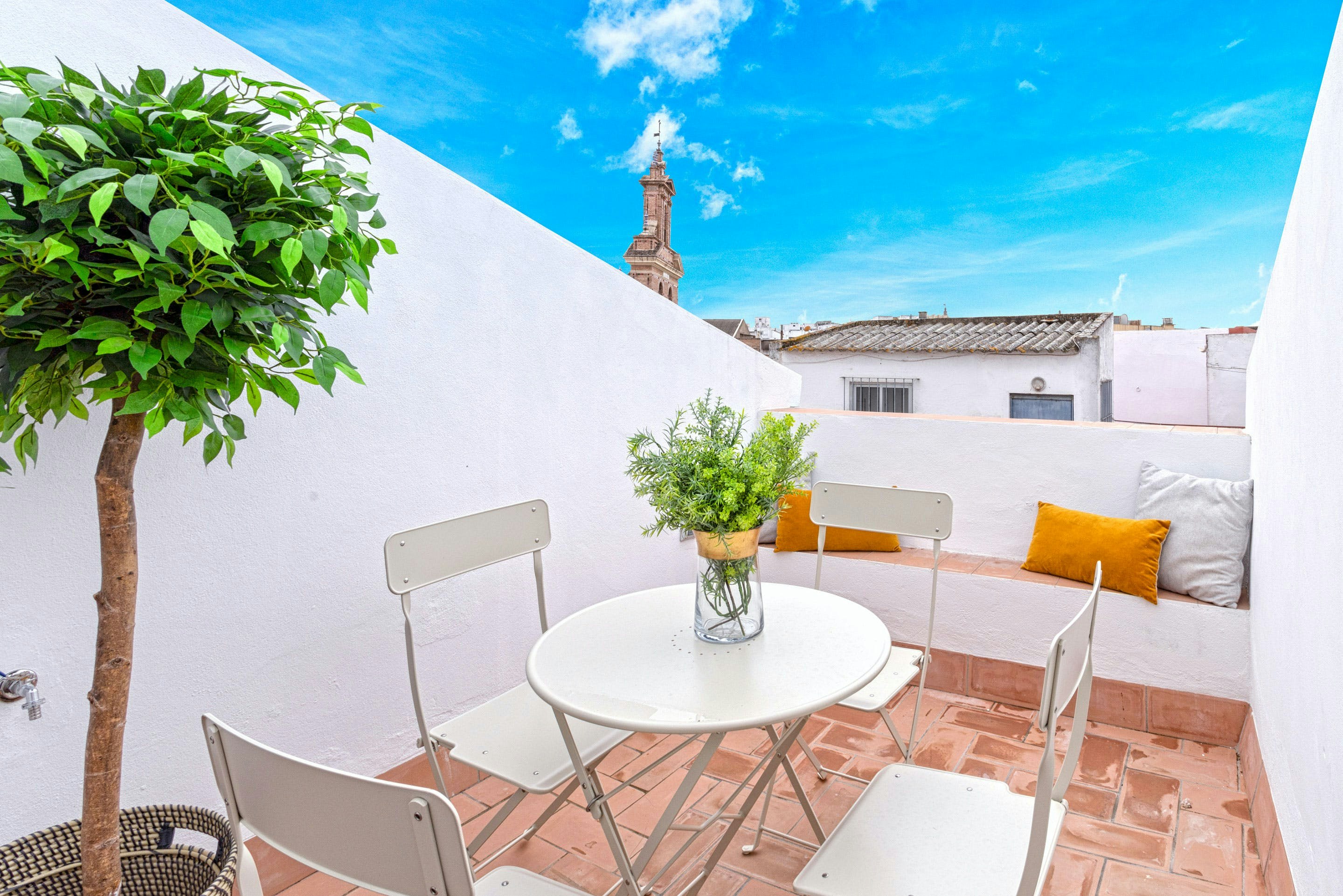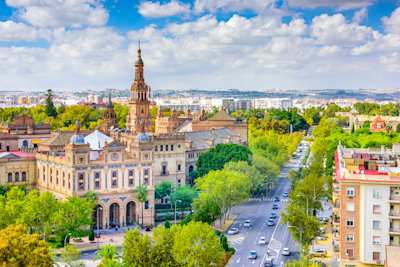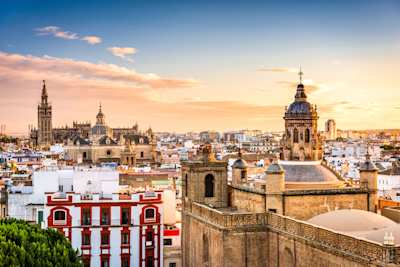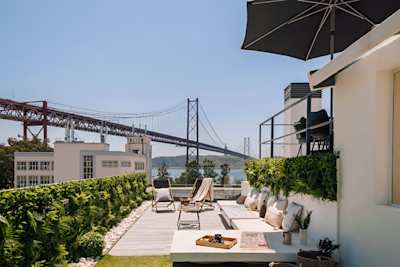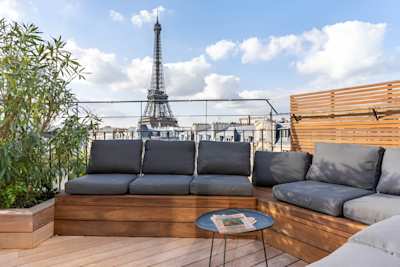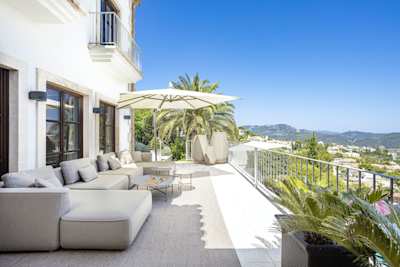8 Remarkable Reasons Why You Should Visit Seville
This Spanish city is the cultural heartbeat of the country, and makes for a fantastic getaway
~

It’s impossible not to be captivated by Seville. With its vibrant culture, rich history, breathtaking architecture and delectable food and drink, it’s one of the best travel destinations in Spain. Our travel experts at Plum Guide have spent much time here, soaking up the lively atmosphere of its festivals and sipping (a little too much) local wine. If you’re on the hunt for a city break, take a look at our top reasons why you should visit Seville. We promise you won’t regret it.
Stunning architecture
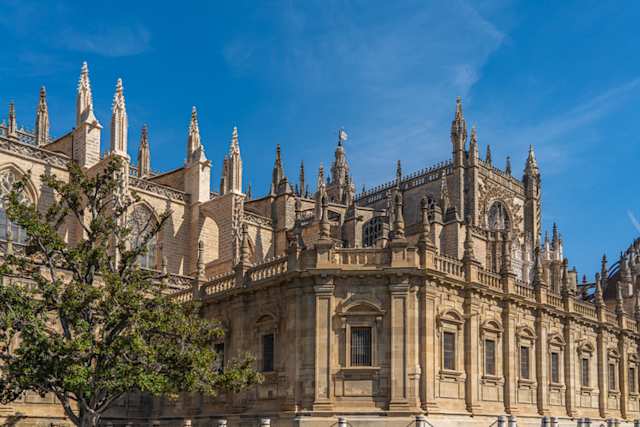
Gothic spires and architecture of the Catedral de Sevilla, Seville
Seville is an architecture lover’s dream, with everything from imposing Gothic buildings to romantic Neo-Mudéjar plazas. One of the most striking pieces of architecture is the Real Alcázar, originally built by the Moors in the 14th century. Since then, it has been expanded and renovated by various monarchs and rulers, resulting in a mix of Islamic, Gothic, Renaissance and Baroque styles. The intricate tilework, arches, courtyards, gardens and water features are all breathtakingly beautiful.
The Catedral de Sevilla is another architectural masterpiece. This is the largest Gothic cathedral in the world, and is as magnificent on the inside as it is on the outside. Built in the 15th century on the site of a former mosque, the cathedral’s Giralda Tower was originally a minaret before later being converted to a bell tower. You can now climb it for some sensational views of the city.
As Seville’s most famous square, the Plaza de España combines Baroque, Renaissance and Moorish styles with features like intricate tilework, arches and fountains. It’s one of the most iconic and beautiful landmarks in Seville, and with street performers and musicians adding to the lively atmosphere, the plaza is a wonderful place to sit back and soak up the views.
Fascinating history
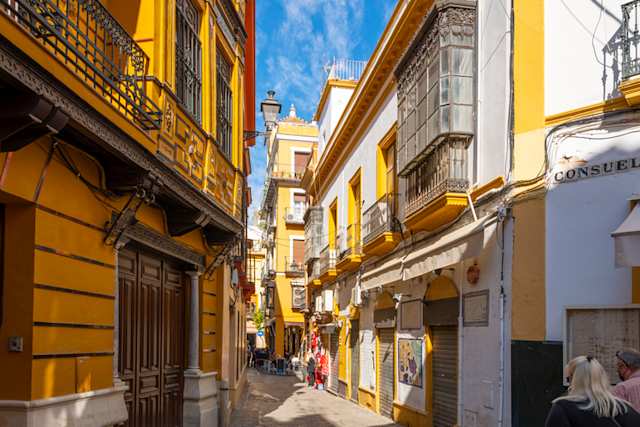
A charming street of shops, homes and cafes in the Barrio Santa Cruz district, Seville
As you’ve probably guessed from the city’s wonderful architecture, Seville has a long and fascinating past, making it the ideal destination for history buffs. Dating back over 2,000 years, this is one of the oldest cities in Spain. It's been inhabited by various civilisations over its long history, including the Romans, Christians and the Moors. It was during the Islamic period when Seville grew into a thriving cultural and economic centre, with the construction of impressive buildings like the Real Alcázar.
The palace is located within Barrio Santa Cruz, once the Jewish quarter of Seville during the medieval era. It’s worth taking a wander through this charming neighbourhood which provides a glimpse into Seville’s past. Everywhere you look, you’ll see fantastic examples of Moorish architecture, with narrow alleyways lined with white-washed buildings – numerous houses here have picturesque courtyards and gardens typical of Moorish design. Many of these streets lead onto lively plazas, such as the beautifully tiled Plaza de doña Elvira or the shaded Plaza de Santa Cruz.
Delicious food

A close up view of olives in a bowl next to a Spanish tapas platter
Foodies rejoice, for the city’s culinary scene is one of the top reasons why you should visit Seville. No trip here would be complete without tapas, quintessential Spanish small plates of savoury dishes. We’ve eaten our way around the city and can personally vouch for La Brunilda Tapas, La Linterna Ciega, La Malvaloca, La Sede, El Rinconcillo and Bar Catedral Sevilla (nab a seat outside for cathedral views). This is just a quick glance – there are numerous tapas bars throughout the city and part of the fun is hopping from one bar to another until you’re too full to move. Each tapas restaurant usually has a particular dish they do well, so be sure to ask what the speciality is before you order.
It’s difficult to narrow down as all the dishes are worth trying, but highlights include salmorejo, a cold tomato soup which is thicker and creamier than gazpacho; carrillada, which is braised pork or beef cheeks which are so tender they melt in your mouth; croquetas de puchero, or croquettes stuffed with beef, pork and cured sausages – crispy on the outside and soft in the middle; and for seafood lovers, albóndigas de choco, an incredibly flavoursome dish of meatballs made with squid or cuttlefish cooked in fish stock.
Exquisite wine
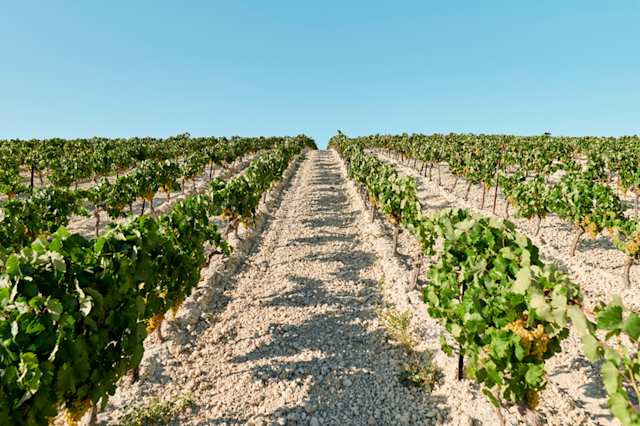
Rows of vineyards growing green grapes in Jerez de la Frontera, Spain
What could be better than Seville wine to accompany those tasty tapas? There are three major wine-making areas in the region, each offering something different. To the west of Seville is the hot and dry Aljarafe region, known for its fortified wines including sherry and brandy. In the north of Seville, the Sierra Norte de Sevilla region is known for its red wines made from Tempranillo, Syrah and Cabernet Sauvignon grapes. The region’s higher elevation and cooler climate create a unique terroir that produces complex and flavorful wines.
Meanwhile, the Guadalquivir-Doñana region is located southwest of Seville and is known for Zalema grapes which profuce fruity whites. With its proximity to the coast, the region has a microclimate that is ideal for growing this grape variety.
While you could spend your entire holiday going on tours and tastings (why not?), definitely make the time to visit Bodegas Salado in the town of Umbrete and Bodegas Tierra Savia in the Sierra Norte mountains. The Jerez de la Frontera region is also worth a day trip – it's just over an hour by car and one of the most famous wine-making areas in the world.
Fantastic flamenco

Young women in red, blue and yellow dresses dancing flamenco on Plaza de Espana, Seville
When you think of Seville, it’s hard not to think of flamenco. This traditional music, song and dance form is thought to have originated somewhere between the 9th and 14th centuries here in Andalusia. Blending influences from Moorish, Jewish and Romani cultures, flamenco is characterised by intense footwork, hand clapping and passionate expressions. You can’t visit Seville without experiencing a flamenco show, and you’ll find a variety of shows every night that range from traditional to modern interpretations.
Some of the most popular venues include the Tablao El Arenal, Casa de la Memoria, and El Patio Sevillano. If you find yourself tapping your feet along to the music, what better place to learn than in Seville itself? There are plenty of dance schools across the city where you can get those hips and feet moving.
Vibrant markets
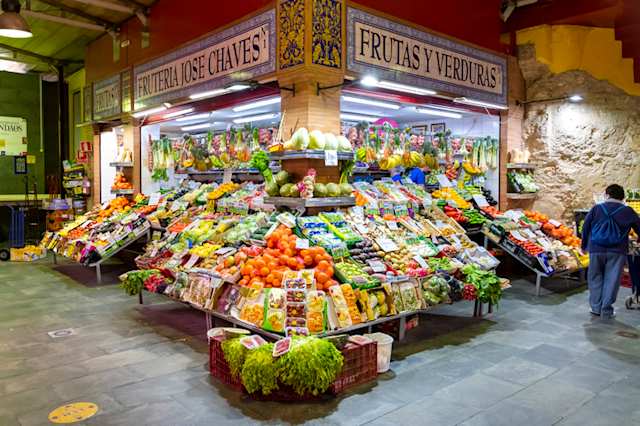
Fruit and vegetable stall with vendor inside Mercado di Triana, Seville
Markets are often the best way to experience the local side of a city, and Seville has a great selection of them. Start your journey at Mercado de Feria, one of the city’s oldest and most popular markets. As well as fresh produce, you’ll also find traditional ready-made eats like fish, paella and arepa. Continue your explorations to Mercado de Triana, a sprawling indoor bazaar set within the Castillo de San Jorge, a centuries-old Moorish fort. The focus here is meat, so if you’re looking to taste cured Iberian ham, you’re in the right place.
If it’s a Thursday, be sure to swing by the famous Mercadillo del Jueves, a huge open-air flea market with over 120 stalls. You’ll find all sorts of treasures here, from bird cages and flamenco dresses to crockery and ornaments. If you’re after more artistic souvenirs, head to Paseo de Arte. Straddling a canal, this is the best place to browse a selection of paintings, portraits, ceramics, textiles and other artworks.
Colourful festivals
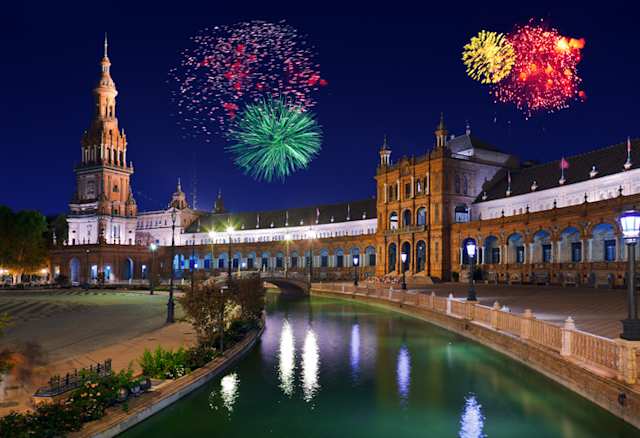
Nighttime firework display above Plaza de España, Seville
The variety of lively festivals is one of the very best reasons why you should visit Seville. One of the largest celebrations is Semana Santa (Easter Week), a spectacular procession of masked penitents and huge floats. This is one of the most important religious festivals in Spain, with people travelling from across the country to witness this week-long event. Another religious festival is Corpus Christi, where events such as exhibitions and concerts take place. A procession leaves from the cathedral, and the streets are strewn with rosemary and other aromatic herbs. One of Seville’s most famous festivals is Feria de Abril (April Fair). This exciting event takes place for a whole week, this time celebrating Sevillian culture. Held in a huge fairground in Los Remedios, get ready for serious dancing, singing, eating and drinking.
Museums and galleries
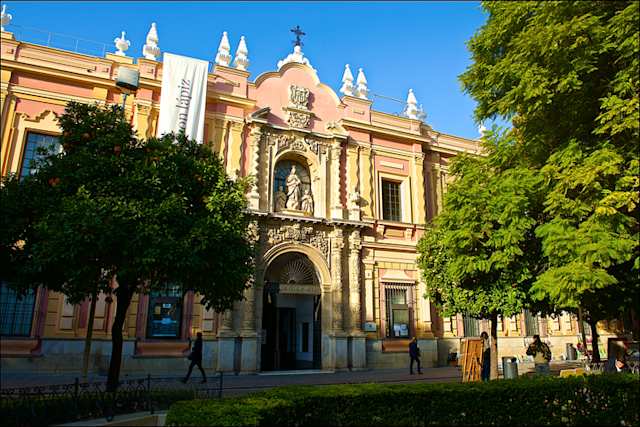
People walking in front of the Museo de Bellas Artes de Sevilla, Seville
Seville has a great selection of museums and galleries, with something for every age and interest. If you've found a new obsession with flamenco, learn more about it at the Museo del Baile Flamenco. Fashionistas should head to the Museo de Artes y Costumbres Populares to check out traditional Andalusian clothes, whereas archaeology enthusiasts will love Museo Antiquarium with its Roman remains.
For art lovers, the city is home to one of the most significant art collections in the country. In the Museum of Fine Arts (Museo de Bellas Artes de Sevilla), you can discover a vast collection of paintings and sculptures from the medieval period to the 20th century. Focusing on Sevillan and Spanish art, marvel at the works of artists like Diego Velázquez, Francisco de Zurbarán and Bartolomé Esteban Murillo. The building itself is a work of art, so don't miss it it if you're interested in art, architecture and culture.
